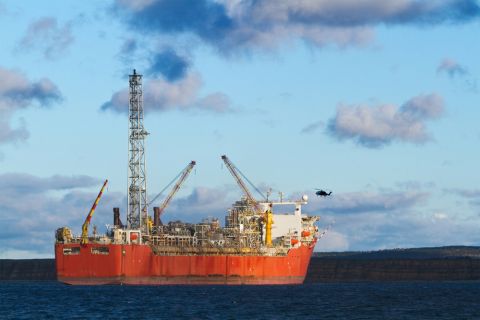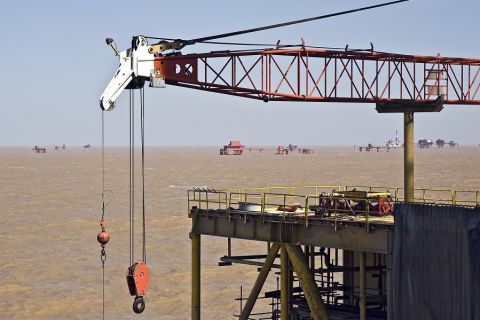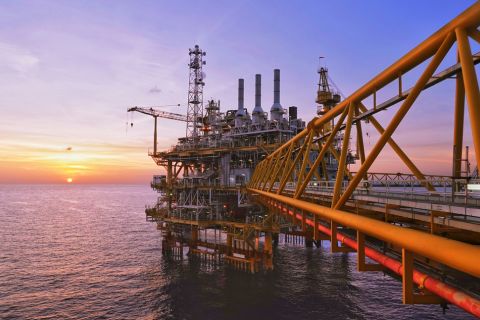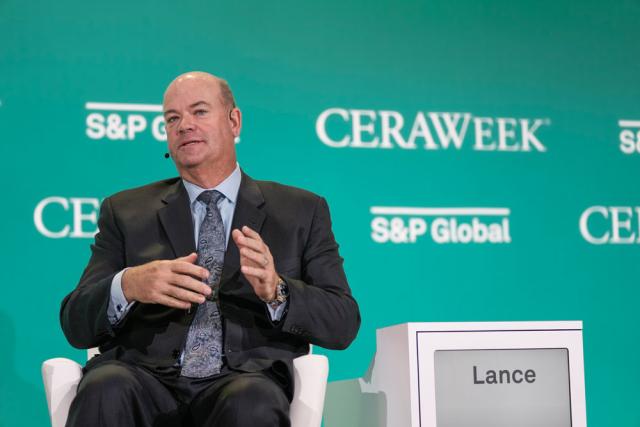
ConocoPhillips' CEO Ryan Lance at CERAWeek by S&P Global. (Source: CERAWeek by S&P Global)
Work is already underway on ConocoPhillips’ Willow drilling project on Alaska’s North Slope just days after receiving federal approval.
Houston-based ConocoPhillips has started construction on the gravel roads needed for the multibillion-dollar Willow project in the National Petroleum Reserve-Alaska, a company spokesperson confirmed.
Environmental groups have also been busy, with multiple groups filing lawsuits.
ConocoPhillips hasn’t made an official final investment decision on the project yet, but the E&P company didn’t wait long to get started on construction activities.
President Joe Biden’s administration issued a final record of decision on March 13 approving a scaled-back version of ConocoPhillips’ Willow drilling plan.
ConocoPhillips didn’t get everything it wanted for Willow from the U.S. Department of Interior (DOI) and the Bureau of Land Management. Two of the five proposed drill sites the company proposed for the project were denied.
That substantially reduces the amount of surface infrastructure, including gravel roads, ice roads and pipelines, required to develop and service those two rejected drill sites.
The DOI also signed off on a total of 199 production and injection wells, down from a previous request for 251 total wells.
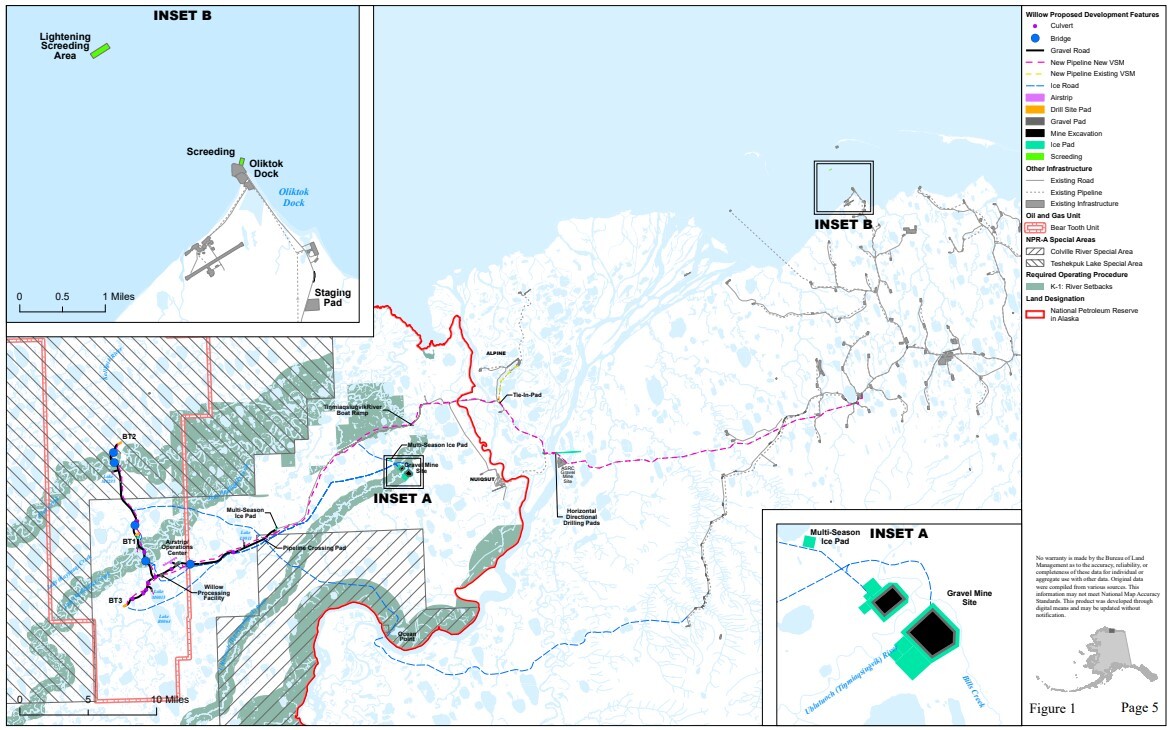
ConocoPhillips plans to spend between $100 million and $400 million on developing Willow this year, CFO Bill Bullock said in the company’s fourth-quarter earnings call in February.
In addition to starting construction on the gravel roads, the company also planned to ramp up fabrication and supply chain activities immediately after receiving a final decision from the federal government, Andy O’Brien, senior vice president of global operations, said during the call.
O’Brien said ConocoPhillips was still finalizing cost estimates at that time, but anticipated spending between $7 billion and $7.5 billion in order to reach first production at Willow.
That’s up from previous cost estimates due to inflationary pressures and refining the scope of the drilling project from five pads as proposed to accommodate BLM’s preferred three-pad alternative.
Analysts at Piper Sandler said while investors have had mixed opinions on the attractiveness of the scaled-back drilling project, the firm sees the DOI’s approval of Willow “as a clear positive for the company.”
Sajjad Alam, vice president and senior credit officer at Moody’s Investors Service, said the DOI’s approval “will provide the company with another avenue for domestic production growth at relatively low cost.”
The Willow project has faced years of delays. ConocoPhillips acquired the oil and gas leases in the National Petroleum Reserve in Alaska in the late 1990s, but work on Willow began in earnest in 2018 when the U.S. Bureau of Land Management began drafting an Environmental Impact Statement.
The project was eventually approved by the Trump administration in 2020. However, a federal judge later vacated the government’s approval of Willow in 2021, citing issues with the project’s environmental review process.
Administration faces lawsuits
While the administration reduced the scope of Willow, environmental and community advocacy groups claim that the drilling project’s approval undermines President Joe Biden’s climate goals.
More than ten organizations are suing the Biden administration in at least two lawsuits in connection with Willow’s approval.
Six groups – Sovereign Iñupiat for a Living Arctic, Alaska Wilderness League, Northern Alaska Environmental Center, Environment America, Sierra Club and The Wilderness Society – said they had filed a lawsuit in U.S. District Court for the District of Alaska on March 14.
The DOI, BLM and the U.S. Fish & Wildlife Service are listed as defendants, according to court documents.
In a separate lawsuit, other groups – including Greenpeace and the Center for Biological Diversity – allege that the Biden administration failed to properly consider alternatives that would have reduced greenhouse gas emissions on the North Slope, among other concerns.
In addition to several federal agencies, the lawsuit named Interior Secretary Deb Haaland and Secretary of Commerce Gina Raimondo as defendants.
“We believe the BLM and cooperating agencies have conducted a thorough process that satisfies all legal requirements,” ConocoPhillips said in a statement. “The final [Supplemental Environmental Impact Statement] addresses the deficiencies identified in the prior EIS that was the subject of the Federal District Court remand in 2021.”
Recommended Reading
TotalEnergies Starts Production at Akpo West Offshore Nigeria
2024-02-07 - Subsea tieback expected to add 14,000 bbl/d of condensate by mid-year, and up to 4 MMcm/d of gas by 2028.
E&P Highlights: Feb. 5, 2024
2024-02-05 - Here’s a roundup of the latest E&P headlines, including an update on Enauta’s Atlanta Phase 1 project.
CNOOC’s Suizhong 36-1/Luda 5-2 Starts Production Offshore China
2024-02-05 - CNOOC plans 118 development wells in the shallow water project in the Bohai Sea — the largest secondary development and adjustment project offshore China.
US Drillers Cut Oil, Gas Rigs for First Time in Three Weeks
2024-02-02 - Baker Hughes said U.S. oil rigs held steady at 499 this week, while gas rigs fell by two to 117.
Equinor Receives Significant Discovery License from C-NLOPB
2024-02-02 - C-NLOPB estimates recoverable reserves from Equinor’s Cambriol discovery at 340 MMbbl.

